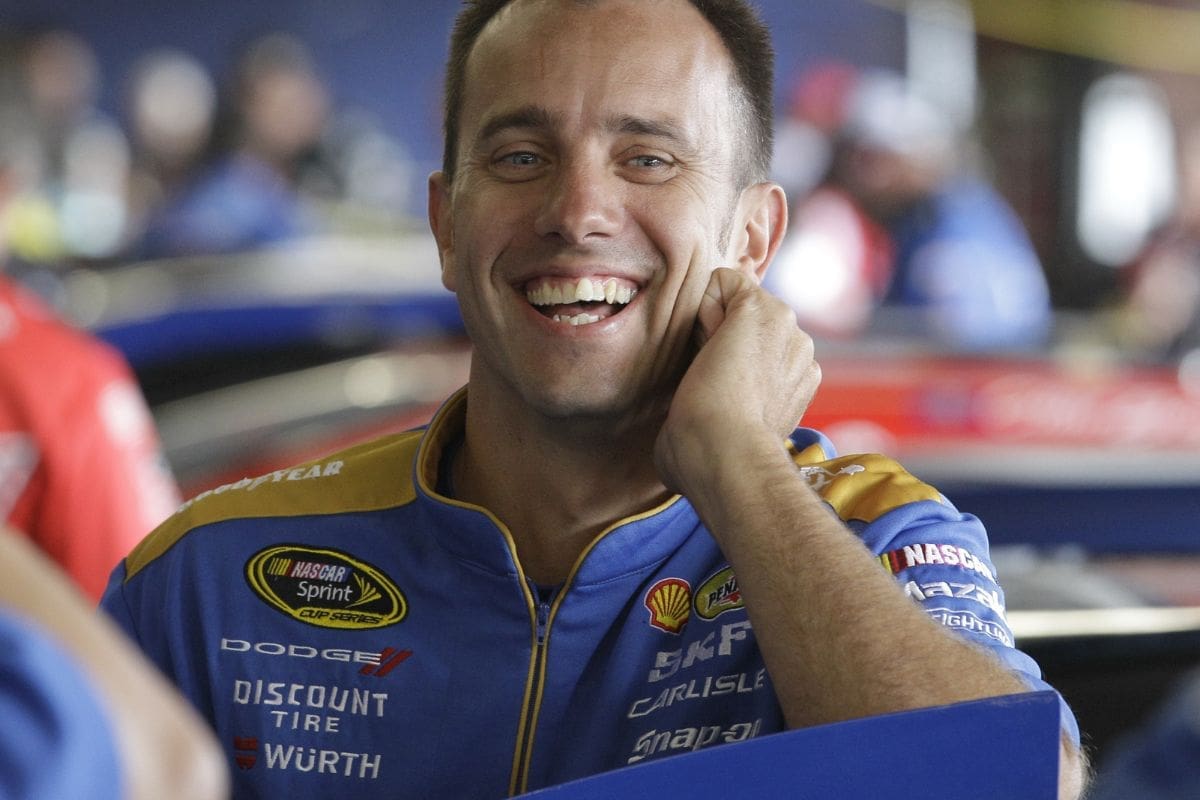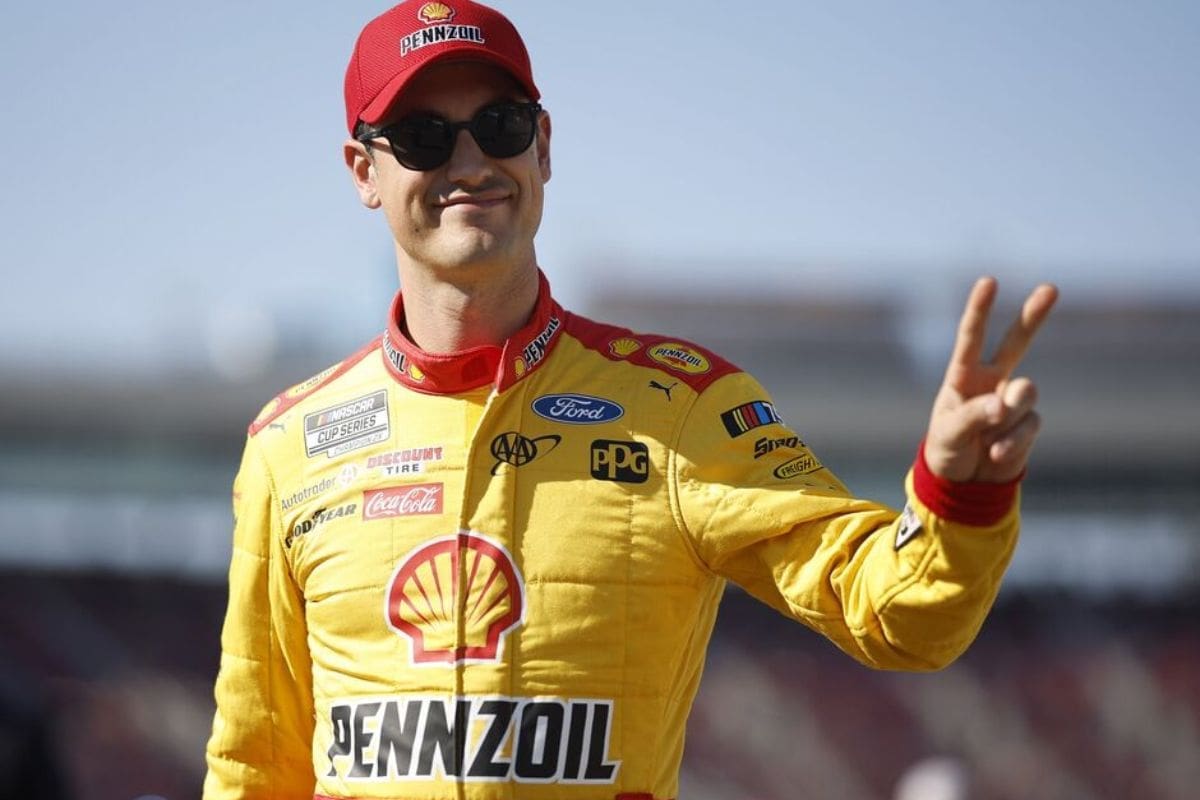Paul Wolfe Drops Game-Changing Tire Results: Paul Wolfe, the strategic mastermind behind Joey Logano‘s racing efforts, recently highlighted the intricacies of NASCAR’s updated tire compounds, particularly for the New Hampshire Speedway. These improvements, aimed at refining the short-track package and increasing tread thickness, present both opportunities and challenges for teams. Wolfe’s detailed analysis emphasizes the complexities of adjusting car setups and strategies to capitalize on the new tire characteristics. By leveraging extensive testing data and predictive analytics, Wolfe provides a compelling narrative on the necessity to adapt quickly.
Key Highlights
- Paul Wolfe highlights the need for significant car setup adjustments to optimize performance with new tire compounds.
- Wolfe emphasizes the importance of data-driven approaches to understand and leverage tire behavior changes.
- Adaptability in tire management and car setup is crucial for success with the new tire compounds.
- Wolfe and Logano’s collaborative strategy focuses on precise driving and tactical expertise to navigate tire compound impacts.
- Wolfe believes in the team’s capability to adapt and optimize performance despite the challenges posed by the new tire compounds.
NASCAR’s Tire Improvements for New Hampshire
In preparation for the upcoming race at New Hampshire Motor Speedway, NASCAR and Goodyear have introduced significant tire improvements aimed at increasing performance and competitiveness on the short track. This collaborative effort is a proof of both organizations’ dedication to improving the quality of racing and ensuring a fair playing field for all competitors. The enhancements are grounded in extensive testing and data analysis, with a specific focus on refining the short-track package.
Following a successful tire test conducted in April 2023, Goodyear has carefully developed a tire that incorporates enhanced tractive compounds, which were initially introduced during last year’s race. Building on this foundation, the upcoming event will see further advancements, specifically an increase in tread thickness. This strategic enhancement is designed to retain more heat within the tires, which is important for maintaining consistent performance throughout the race.
The increased tread thickness directly contributes to higher tire fall-off rates, an important factor in short-track racing. Improved tire fall-off promotes greater variability in tire performance over the course of a race, thereby creating more dynamic and engaging competition. It allows drivers to experience distinct handling characteristics as their tires wear, ultimately leading to more overtaking opportunities and tactical depth.
Moreover, these improvements are anticipated to create better passing opportunities, a perennial objective in NASCAR’s pursuit of competitive fairness and fan engagement. By facilitating a more pronounced differential in tire performance, the new tire compounds are expected to reward driver skill and strategic understanding, making each lap at New Hampshire Motor Speedway a test of both machine and human capability. This careful approach highlights NASCAR and Goodyear’s dedication to elevating the sport’s technical standards and its competitive integrity.
Challenges and Concerns with Tire Compounds
While the new tire compounds promise improved performance and competitiveness, they also introduce a set of complex challenges that teams must navigate, particularly regarding car setup and adaptability. One of the primary concerns revolves around the significant adjustments required to optimize car performance under the new conditions.
Paul Wolfe, the seasoned crew chief for Joey Logano, has emphasized the intricacies involved in adapting to these changes, noting that each compound demands a unique approach to car setup, which can be a challenging task for teams.
“So, you’re fine-tuning off from a base setup and settings in a race car.”
“But when you find something that works, until there is a big change in the tire or aero package, I’ve found over the years you can really just take it from one track to the next and do your offsets or your changes for the different loads or speeds and you can continue to have success with it.” – Wolfe
Historically, Wolfe has demonstrated a keen aptitude for fine-tuning vehicles to suit specific tire characteristics, achieving strong finishes with previous compounds. However, the introduction of new compounds like those recently used in Iowa adds a layer of uncertainty. The shift from one compound to another is not merely a matter of swapping tires; it entails a thorough re-evaluation of various car parameters, including suspension settings, aerodynamics, and tire settings. This reconfiguration process is time-consuming and requires precision to ensure top performance on race day.
Moreover, the variability in performance outcomes due to different tire compounds adds another dimension of unpredictability. Teams must gather extensive data through practice sessions and simulations to understand how the new tires behave under different conditions, further complicating the setup process.
Wolfe’s cautious stance shows the sentiment within the NASCAR community: while the pursuit of improved performance through tire innovation is commendable, it must be balanced against the practical challenges of implementation. The ability to swiftly adapt to these changes will likely separate the successful teams from the rest, emphasizing the importance of meticulous preparation and adaptive strategies in this new era of tire technology.
Paul Wolfe’s Strategy and Optimism
Paul Wolfe, leveraging his extensive experience and strategic insight, remains optimistic about Joey Logano’s prospects at New Hampshire despite the inherent challenges posed by the new tire compounds. Wolfe’s confidence is underpinned by his adeptness at adapting setup strategies across varying track conditions. He emphasized that once an effective setup is dialed in, it can often be successfully transposed to different race settings, which is a demonstration of his meticulous approach to race preparation.
Wolfe’s optimism is not unfounded; recent performances have provided a solid foundation for his confidence. A notable sixth-place finish in Iowa and a previous victory at North Wilkesboro serve as indicators of the team’s adaptability and competitive edge. These performances highlight Wolfe’s capability to fine-tune vehicle setups to optimize performance, even when faced with the unpredictable variables introduced by the new tire compounds.
Joey Logano’s Track Record and Strategy
Joey Logano’s performance at New Hampshire Motor Speedway, highlighted by steady top-10 finishes, demonstrates his skill in mastering the intricacies of this demanding track. With four top-10 finishes in the last five races, Logano’s consistency emphasizes his deep understanding of the track’s unique characteristics and his ability to adapt seamlessly to its evolving conditions.
Logano’s strategic approach at New Hampshire is multifaceted, reflecting a blend of precise driving, tire management, and situational awareness. This strategy is enhanced by his collaboration with crew chief Paul Wolfe, whose historical success in the early 2000s Busch Series at the track adds a layer of tactical expertise. Together, they form a formidable team, poised to utilize their cumulative experience for excellent performance.
- Tire Management: With NASCAR’s recent changes in tire compounds, effective tire management becomes crucial. Logano’s ability to preserve tire integrity while maintaining competitive speeds speaks to his advanced driving skills and strategic foresight.
- Adaptability to Race Conditions: Logano’s familiarity with New Hampshire’s variable track conditions allows him to make real-time adjustments, ensuring sustained performance even as the race evolves. His adaptive driving style enables him to navigate both long runs and short sprints effectively.
- Qualifying and Track Positioning: Securing a strong starting position is crucial at New Hampshire, given the track’s narrow grooves and limited passing opportunities. Logano’s proficiency in qualifying ensures he begins races in advantageous positions, setting the stage for successful outcomes.
Outlook for Team Penske’s #22
As Team Penske’s #22 prepares for the upcoming race at New Hampshire Motor Speedway, the combination of Joey Logano’s track proficiency and Paul Wolfe’s strategic insight positions the team for a potentially landmark performance. The anticipation is palpable, given Logano’s historical strength at the ‘Magic Mile’ and Wolfe’s reputation for tactical expertise. This race could mark Team Penske’s initial points-paying victory of the 2024 season, a significant milestone in their championship campaign.
Logano’s familiarity with New Hampshire Motor Speedway is a critical asset. His past successes on this track, combined with a deep understanding of its unique characteristics, provide a solid foundation for race-day execution. Wolfe’s ability to adapt strategies to evolving race conditions and his intimate knowledge of tire management will be instrumental. With NASCAR’s recent tire compound changes, Wolfe’s expertise in leveraging these details to gain a competitive edge could be the differentiator.
Despite the inherent differences between Iowa Speedway and New Hampshire Motor Speedway, both Wolfe and Logano have expressed confidence in their capacity to make the necessary adjustments. The team’s adaptability will be tested, but their track record suggests they are well-equipped to handle the challenge. The focus will be on optimizing car setup to enhance grip and performance, ensuring they remain competitive throughout the race.
News in Brief: Paul Wolfe Drops Game-Changing Tire Results
The recent modifications to NASCAR’s tire compounds for New Hampshire Speedway highlight significant advancements, emphasizing tread thickness and short-track performance improvements. These changes introduce complexities in car setups and strategies, requiring a data-driven approach to optimize performance.
Paul Wolfe’s emphasis on understanding the new tire behaviors emphasizes the critical nature of adaptation for competitive success. Team Penske’s #22, driven by Joey Logano, stands ready to capitalize on these insights, potentially improving race outcomes through strategic implementation.
ALSO READ: Paul Wolfe: Mastering NASCAR – Pioneering Victory with Winning Strategies




